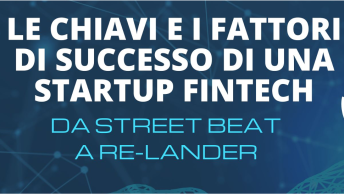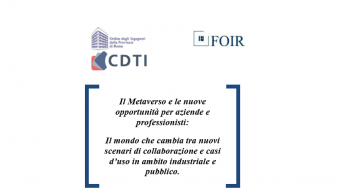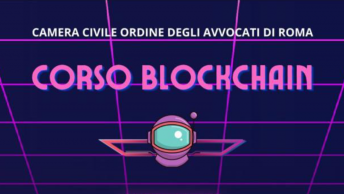by Gianluca Duretto, Adjunct Professor, Blockchain Digital Payments and Cryptocurrencies – International University of Rome UNINT.
Blockchain technology has been widely talked about since 2016, from the first conferences and the first announcements of major fundraising, on revolutionary projects based on distributed ledger technology that promised true IT miracles, data security, independence from external authorities and the impossibility of modifying anything without the consent of network participants.
Today, the blockchain is considered an established technology, but still very fragmented given the countless offer, to such an extent that Gartner, a leader in research worldwide, in a recent report explains that it expects that by 2021 about 90% of current blockchain implementations in the enterprise sector will be revised and modified, to remain above all competitive and secure, due to the excessive fragmentation of the blockchain offer, often very similar and used in a complementary way.
Today, blockchain is considered an established technology, but it is still very fragmented given the countless offerings, to such an extent that Gartner, the world’s leading research firm, explains in a recent report that it expects that by 2021 around 90% of current blockchain implementations in the enterprise sector will need to be revised and modified, in order to remain above all competitive and secure. This is due to the excessive fragmentation of the blockchain offerings, which are often very similar and used in a complementary manner.
Gartner predicts in 2020 that “in the next five years there will be no single dominant blockchain platform. Instead, we expect a multi-platform world to emerge.”
We’ll be looking to see why this is an issue and whether this is just a phase in the technology’s lifecycle and could stop adoption in the coming years and whether the adoption of multi-platform solutions is the true path to mass adoption.
The international scenario of blockchain projects if we look at the data of the Blockchain & DLT Observatory of the Politecnico di Milano in its latest edition of 2021, reports that the total number of projects implemented and operational internationally, from 2016 to 2020 is 508 out of a total of 1,242 use cases surveyed. In the last year alone, projects have increased by 59% compared to an 80% decrease in announcements about the future development of blockchain projects that often end without real adoption of the technology, within the company’s information systems. The data reported by the observatory is also very interesting because it shows that the pioneering phase made only of announcements, the so-called “hype” is now over and that the impact of distributed ledger technology has been understood by the managers of companies especially in three areas of adoption that are traceability, payment management, and the production chain. In the graph below are the data from the Blockchain & DLT Observatory of the Politecnico di Milano edition 2021 of the blockchain market presented during the conference “Blockchain: the hype is over, get ready for ecosystems”.
This publication will attempt to analyse the real evolution of the technology, its most important limitations and, above all, the undeniable advantages, which are still the main reasons for its adoption at an industrial level.
Let’s start from the evolution of the technology, always starting from the initial choice on what type of blockchain to choose according to the purposes of the project, always remembering that for blockchain must always be considered the public “permisionless” or “permissioned” very different for its intrinsic characteristics from DLT. Just think of the concept of consent or the possibility of access to the network of nodes, to read the data in the case of the public blockchain, access is unlimited and free and in the case of blockchain permissioned that instead is a private network, is always limited only to authorized nodes with rights and restrictions very specific and limiting.
The two public blockchains of reference in addition to the one created by the founder of Bitcoin, Satoshi Nakamoto in 2008 in his white paper by Vitalik Buterin, a mathematical genius who hypothesised a decentralised and revolutionary one with smart contracts called Ethereum.
The blockchain originated in 2008 with Satoshi Nakamoto‘s Bitcoin as a financial project for a new decentralised digital currency but evolved into other areas with Vitalik Buterin’s Ethereum. The young mathematical genius in 2013, introduces in his decentralised blockchain the concept of smart contracts or “Smart Contracts” that are executed automatically, when the conditions signed by the parties are met, both have in common as all public blockchain, the possibility for everyone to access the network and become a node of it.
The applications of this technology are manifold, the main ones, as we have seen, being those of a financial nature. New types of digital currencies facilitate financial transactions at much lower and more certain costs than those of the traditional financial system, such as in money transfers where we have seen excellent examples of the use of blockchain. The logistics sector, such as the supply chain, or supply chains, are areas where the use of blockchain technology has brought undeniable advantages, with transparent, documentable and traceable transactions between the various operators in the sector in a decentralised registry at lower costs, drastically reducing costs, including those related to human error in this delicate sector.
The applications of this technology are manifold, the main ones as we have seen are those of a financial nature, such as new types of digital currencies that facilitate financial transactions and digital payments with much lower costs and timescales than those of the traditional financial system. As in the case of money transfers, where we have seen solid examples of blockchain use that are revolutionary for the entire financial market. The logistics sector, such as the supply chain, or supply chains, are other areas where the use of blockchain has brought undeniable advantages, with transparent, documentable and traceable transactions between the various operators in the sector in a decentralised registry at lower costs, drastically reducing costs, including those related to human error in this delicate sector.
We can also recall the uses in the food and grocery sector, such as in jewellery or luxury goods, of this technology which, unlike the others, makes it possible to create ecosystems between the various players with data shared between them in a transparent, secure and unchangeable way.
Integration with data from external oracles, such as data sensors linked to equipment outside its own network, allows the blockchain to secure data in a distributed ledger accessible to all in both reading and writing, with the mathematical certainty given by cryptography, one of the pillars of blockchain technology, of its modifiability.
Ethereum also with its new edition “London” finally promises a leap forward in performance in spite of a radical evolution of technology that would bring it closer to the concept of proof of stake from that of proof of work, with a substantial change in the process of incentive for miners and a drastic reduction in energy consumption necessary for the operation of the network itself.
What is evident is the impact and importance that this evolution of the Ethereum blockchain will have for its main application which is in the DE-FI sector. Decentralised finance in fact, is based on Ethereum and has in the smart contract one of its foundations, to allow decentralised financial transactions. So it is even more evident the impact that will have and how much is also ‘important an evolution of blockchain technology Ethereum underlying the De-Fi, and why the whole community of developers, awaits with great interest this radical change of the EIP 1559 (Ethereum improvement proposal). The main change will be in the reward mechanism for “miners” and the ability of the blockchain to “burn tokens” having an impact on the inflation of Ethereum tokens themselves.
The main benefit from the early studies of EIP 1550 is in the overall improvement in the overall performance of the technology. Only the first adoptions when the Ethereum 2.0 or Serenity version will finally be available will tell us if these expectations have been met or not but the expectations are very high for the whole blockchain community.
What is clear is that the three main problems of blockchain remain unresolved after years of adoption, which can be summarised mainly in the three pillars of the blockchain trilemma, interoperability, scalability and energy consumption, which no blockchain type has managed to solve efficiently and definitively to date, regardless of the announcements preceding the presentation of a new blockchain type.
On the first factor, interoperability is still a critical factor, and in my opinion the most important one, in adopting the right type of blockchain whether it is public or DLT or has a Pow or Pos consensus, to safeguard investments made, especially ensuring usability with other types of technologies, even other types of blockchain. The difficulty of making different blockchains communicate with different consensus algorithms is the main problem faced by this revolutionary technology today.
The second critical factor remains the scalability that despite the technological evolution of the technology remains a criticality especially because today in a phase of evolution, the problem of the number of transactions per second (tps) still remains a real criticality of this technology. For Bitcoin with its 7tps and higher layers such as Lighting Network or loopring pay or Sewit or Celer Network for Ethereum or with the new “london” version as described above, attempts are being made to overcome this obvious problem, but mass adoption will certainly reduce the impact of this issue with the new versions. DLT technology, on the other hand, citing Algorand as an example, has achieved superior performance comparable to other industrial systems, but at the expense of true decentralisation, as in public blockchains.
The third issue is that related to energy consumption, very fashionable in the last year, for example with the echo on social networks of the attacks that Elon Musk makes against Bitcoin, also for other purely speculative purposes given the depreciation that has suffered the main cryptocurrency after the unfounded criticism of the American tycoon, but certainly a valid topic of discussion for the entire community of developers of blockchain technology.
Certainly in my opinion among the many projects in place on Bitcoin that of Lighting Network remains for me, among the interesting because it seems to solve the problem of scalability of the main technology among the blockchain. Bitcoin is at the centre of studies to improve the protocol but not to the detriment of its two main features, decentralization and security, but also increasing scalability. Decentralization, security and scalability are the three foundations of the Blockchain trilemma as mentioned in the paragraph above and the original Bitcoin protocol only solves two of them.
Lighting network is a project born in 2018 as a 2nd level layer of Bitcoin and if it proves with its broad adoption to be able to overcome the trilemma of the blockchain with a finally important scalability, it will allow a mass adoption of the digital gold of the new millennium.
We can imagine how important it would be to massively adopt the Lighting network blockchain for digital payments, so as to increase the adoption of bitcoin micropayments, for example, which would definitively revolutionise the world of digital payments with the main cryptocurrency used in everyday life.
Finally, I would like to underline the importance for the Ethereum blockchain of the London update with the introduction of an EIP 1559, the Ethereum Improvement Proposal, which has the ambitious goal of improving the entire network economy in transaction management and the total supply of Ethereum available on the market.
We are also waiting for Ethereum to move to Eth2, which will adopt the Proof of Stake consensus announced in EIP 3675 a few days ago, which even announces the merger of the two blockchains. Given the volumes and the importance of the Ethereum network, this transition will certainly take place with the right caution, to be able to execute it without any problems whatsoever and in safety, but with the obvious advantages of adopting this important change both in terms of global performance and also and above all in the relationships between the miners and the nodes themselves with more certain fee amounts “gas” for all operations.
ETh2 or Serenity will have the technical characteristics to improve the scalability of the ethereum network and also improve security, so as to make, for example, all Dapps applications developed on it even more trusted and above all the complex world of decentralised finance, the DEfi, even more secure.
2021 is an important year for blockchain technology, as we have seen, but there is still a lot to be done to strengthen the more solid projects such as Eth2 and to overcome the problems that have been encountered to date, for example on the security of some De.Fi. applications or their actual speed. The evolution of multi-platform solutions, for example, is encountering problems relating to interoperability between blockchains, and in many cases we have seen that this type of approach is correct as an industrial choice.
I am sure, however, that the path of evolution, for the affirmation of digital and decentralised finance is now marked and the blokchain, with its evolutions, is preparing to become a “technological layer” of value as the AI or the Cloud, for its main characteristics of immutability, traceability and security that make it a unique technology today.
We pay particular attention to the evolution of Ethereum2 which will have important effects throughout the world of decentralised applications (Dapps) and especially in the De.FI. sector of decentralised finance. The sector is in full evolution in this phase of maturity and the blockchain is ready for its leap that will take it in the next few years to become a widespread technology, bringing the advantages of decentralisation to various industrial sectors.
Fonte: broadband4europe.com








